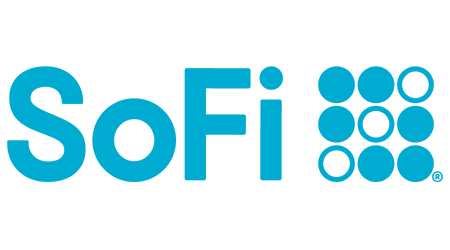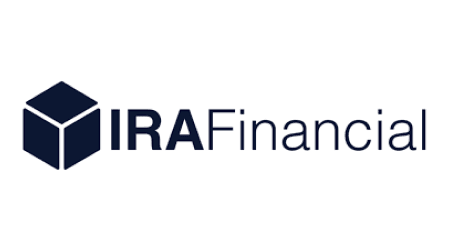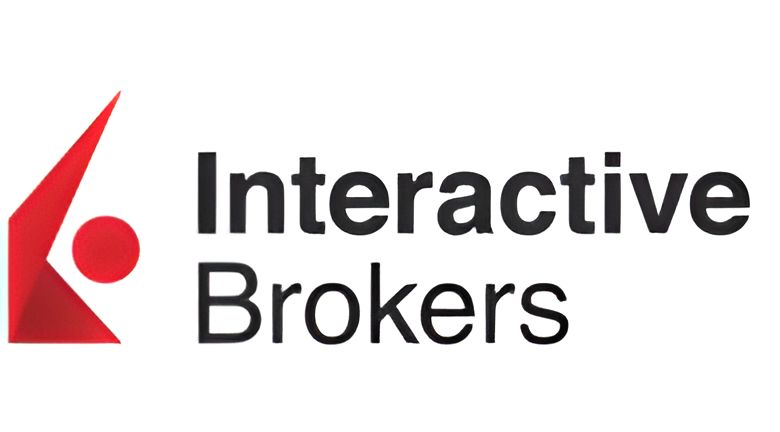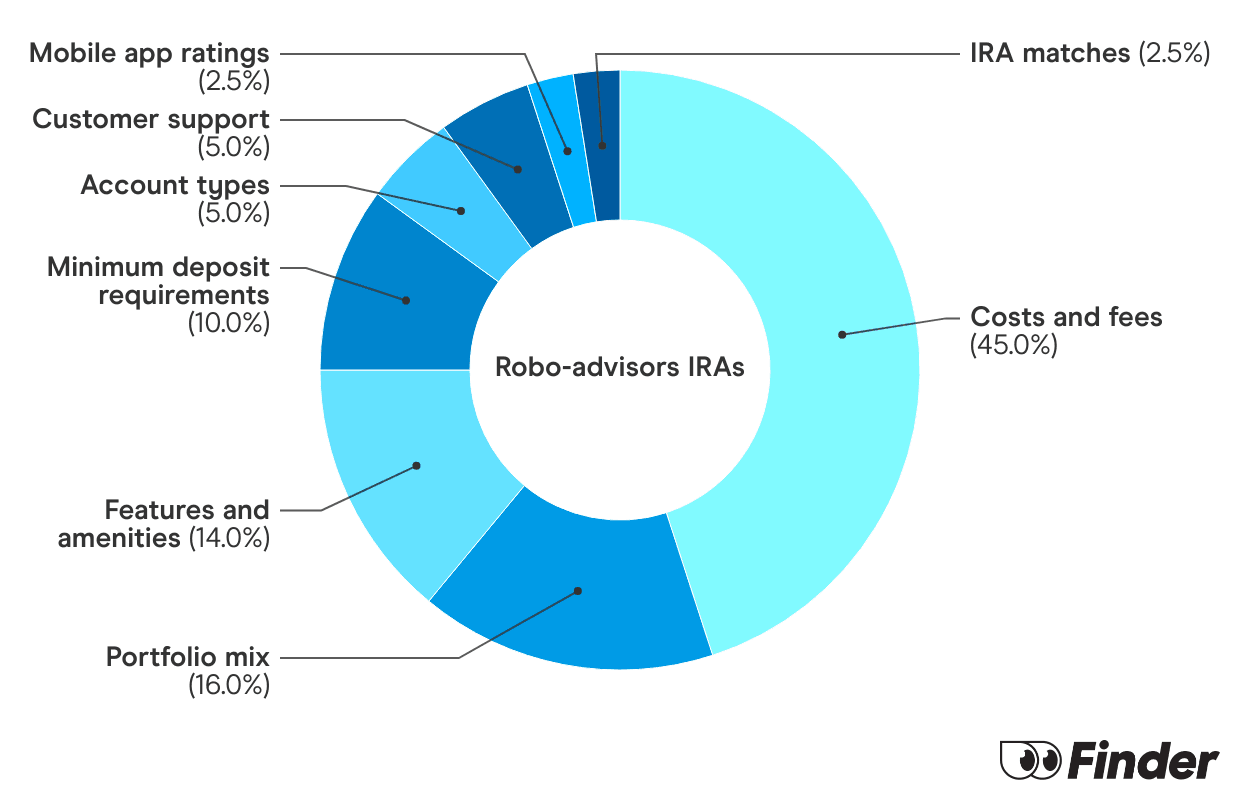-
Commitment to our readers
18 years
Helping you save money
Reviewed
by experts
Cited by
major publications
Finder maintains full editorial independence to ensure for our readers a fair assessment of the products, brands, and services we write about. That independence helps us maintain our reader's trust, which is what keeps you coming back to our site. We uphold a rigorous editorial process that ensures what we write and publish is fair, accurate, and trustworthy — and not influenced by how we make money.
We're committed to empowering our readers to make sound and often unfamiliar financial decisions.
We break down and digest information information about a topic, product, brand or service to help our readers find what they're looking for — whether that's saving money, getting better rewards or simply learning something new — and cover any questions you might not have even thought of yet. We do this by leading with empathy, leaning on plain and conversational language that speaks directly, without speaking down.
What is a SIMPLE IRA?
A SIMPLE IRA is a workplace retirement plan generally designed for small businesses with 100 or fewer employees. As with a traditional IRA, the money in a SIMPLE IRA grows tax-deferred until account holders make qualified withdrawals at age 59.5 or later. Within a SIMPLE IRA, employees can choose from various investing options, including stocks, bonds, exchange-traded funds (ETFs) and more.
Employer contributions are mandatory, and employees can elect to contribute as well. Contributions are always 100% owned by the employee.
Our top picks for brokerages that offer SIMPLE IRA accounts

- $0 annual fee and no stock or ETF commissions
- Robo-advisor and financial planning sessions
- Access private credit, venture capital and other alternative asset funds

- Choose from a variety of self-directed retirement account options
- Invest in alternative assets like real estate, crypto, private businesses and more
- Take advantage of tax benefits to grow your retirement savings

- $0 commissions on stocks, ETFs and options
- Trade stocks, bonds, ETFs, mutual funds, options, futures & currencies in your IRA
- Beginner-friendly and advanced mobile trading platforms, with robust research tools
SIMPLE IRAs at a glance
| Type of employer | Typically small businesses with 100 or fewer employees |
|---|---|
Who can contribute | Employers and employees |
Contribution limits | In 2025, employees can contribute up to $16,500 and an extra $3,500 if they are age 50 or older.(1) If the employee participates in another employer-sponsored retirement plan, such as a 401(k) in which they make elective deferral contributions, the total they can save across all those plans in 2025 is $23,500. Employers must match up to 3% of the employee’s pay or a nonelective contribution for each eligible employee equal to 2% of the employee’s salary up to the annual limit of $350,000. |
Employee eligibility | Employees who received at least $5,000 in compensation during any two prior years and who are expected to make at least $5,000 in compensation during the current calendar year.(3) |
Tax status | Pre-tax |
Deductible contributions | Employers can deduct all contributions on their tax returns. Employees can’t deduct contributions, but their contributions reduce their taxable income. |
Access to funds before age 59.5 | Withdrawals before age 59.5 are taxable and subject to a 10% early withdrawal penalty; withdrawals within the first two years of participation in the plan incur a 25% penalty instead of 10%. |
How does a SIMPLE IRA work?
A SIMPLE IRA functions like a traditional IRA in terms of investment options and distribution and rollover rules. Here are the highlights of a SIMPLE IRA:
- Employee contributions are not tax-deductible but do reduce their taxable income.
- Take distributions at any time, but distributions before the age of 59.5 are taxable and incur a 10% early withdrawal penalty.
- If you take a distribution within the first two years you participate in the SIMPLE IRA, the early withdrawal penalty jumps from 10% to 25%.
- Required minimum distributions (RMDs) begin at age 73.
- Roll over money tax-free to another IRA or an employer-sponsored retirement plan such as a 401(k) after the first two years of plan participation — a rollover within the first two years of plan participation can only be to another SIMPLE IRA.
SIMPLE IRA contribution limits
Employers are required to contribute each year to their employees’ SIMPLE IRAs. Employers can choose either a matching contribution of up to 3% of compensation or a nonelective contribution for each eligible employee equal to 2% of their compensation up to the annual limit of $345,000. In other words, if an employee makes $350,000 a year, the 2% contribution would be $6,900 (2% x $345,000 = $6,900) instead of $7,000 (2% x $350,000).
Employees can choose to contribute to their accounts as well. Employee contributions are made through elective deferrals, and they can contribute up to $16,500 in 2025 and another $3,500 if they’re age 50 or older. If the employee participates in another employer-sponsored retirement plan in which they make elective deferrals, the most they can contribute across all these accounts is $23,500.
SIMPLE IRA taxes
Money in a SIMPLE IRA grows tax-deferred. This means you won’t need to pay taxes on your savings until you withdrawn them. But if you make a withdrawal before age 59.5, you’ll likely face an early withdrawal penalty. The usual penalty is 10%, but it’s bumped to 25% if you withdraw money within the first two years of participation in the plan.
The employer can deduct its contributions each year. Employees can’t deduct contributions, but their contributions reduce their taxable income.
Are SIMPLE IRAs insured?
SIMPLE IRA funds in bank deposit products like a certificate of deposit (CD) are insured up to the $250,000 limit set by the Federal Deposit Insurance Corporation (FDIC). If your IRA investments are in stocks and exchange-traded funds (ETFs), FDIC insurance will not apply.(4)
However, an IRA held at a brokerage firm that’s a member of the Securities Investor Protection Corporation (SIPC) is protected up to $500,000 for securities and cash.
How to set up a SIMPLE IRA as a small business
If you want to start a SIMPLE IRA for your small business, you have two options:
- Choose a financial institution to serve as the SIMPLE IRA trustee for all your employees. Explore and compare IRA providers like brokerages and banks while considering points like investment options, fees, customer support and platform functionality. Execute a written agreement using Form 5305-SIMPLE if you will deposit all contributions at a financial institution that you, the employer, designate.
- Let your employees choose their own IRA custodian. Use Form 5304-SIMPLE if you want to let your employees choose their own SIMPLE IRA custodian.
Benefits and drawbacks of SIMPLE IRAs – are they worth it?
Weigh the pros and cons of a SIMPLE IRA to decide if it’s right for you.
Pros
- Easy to set up. Minimal paperwork to establish an account. Complete with Form 5304-SIMPLE or Form 5305-SIMPLE and create an account with an IRA custodian.
- Deductible contributions. Employers can deduct their contributions to employee plans, while employee contributions reduce their taxable income.
- Money grows tax-deferred. Don’t pay taxes on your money until you begin taking withdrawals.
Cons
- Lower contribution limit than other employer-sponsored plans. Employees can contribute up to $16,500 in 2025, compared to $23,500 with a 401(k).
- SIMPLE IRAs don’t allow participant loans. Unlike a 401(k), SIMPLE IRA participants can’t borrow from their account.
- Steep early withdrawal penalties within the first two years. If you withdraw money from your SIMPLE IRA within two years of establishing the account, the early withdrawal penalty jumps from 10% to 25%.
- RMDs. Plan participants must begin withdrawing money from their SIMPLE IRA starting at age 73.
Compare brokerages that offer SIMPLE IRA accounts
Narrow down top brokers by annual fee, stock trade fee and more to find the best for your financial goals.
What is the Finder Score?
The Finder Score crunches 147 key metrics we collected directly from 18+ brokers and assessed each provider’s performance based on nine different categories, weighing each metric based on the expertise and insights of Finder’s investment experts. We then scored and ranked each provider to determine the best brokerage accounts.
We update our best picks as products change, disappear or emerge in the market. We also regularly review and revise our selections to ensure our best provider lists reflect the most competitive available.
Read the full Finder Score breakdown
Paid non-client promotion. Finder does not invest money with providers on this page. If a brand is a referral partner, we're paid when you click or tap through to, open an account with or provide your contact information to the provider. Partnerships are not a recommendation for you to invest with any one company. Learn more about how we make money.
Finder is not an advisor or brokerage service. Information on this page is for educational purposes only and not a recommendation to invest with any one company, trade specific stocks or fund specific investments. All editorial opinions are our own.
SIMPLE IRA vs. SEP IRA vs. Solo 401(k)
SIMPLE IRAs, SEP IRAs and Solo 401(k)s are all retirement plans available to business owners, but these plans differ in how they operate.
| SIMPLE IRA | SEP IRA | Solo 401(k) | |
|---|---|---|---|
Who it’s for | Small businesses with 100 or fewer employees | Any size business | Business owner with no employees |
Who can contribute | Employers and employees | Employers | Business owner contributes as employer and solo employee |
Employee contribution limits | $16,000 | None | $23,000 |
Employer contribution limits | Employers must match up to 3% of the employee’s pay or a nonelective contribution for each eligible employee equal to 2% of the employee’s salary up to the annual limit of $345,000 | Up to 25% of employee’s compensation | Up to 25% of employee’s compensation |
Tax status | Pre-tax | Pre-tax | Pre-tax or after-tax |
Bottom line
If you’re a small business with 100 or fewer employees looking for a simple, cost-friendly retirement plan for your employees, a SIMPLE IRA may be worth considering. Employers are required to make contributions on behalf of each eligible employee, but their contributions are tax-deductible. Employees also get tax benefits for contributing — contributions reduce their taxable income, and their money grows tax-deferred until they begin taking withdrawals.
Frequently asked questions
What are the disadvantages of a SIMPLE IRA?
SIMPLE IRAs have stricter early-withdrawal penalties than other retirement plans. With many retirement plans, you’ll incur a 10% early withdrawal penalty if you pull your money out before reaching age 59.5. If you make an early withdrawal from a SIMPLE IRA within the first two years of participation in the plan, you’ll pay a 25% penalty. SIMPLE IRAs also don’t have a Roth option, which would allow you to make tax-free withdrawals at retirement.
What is the 2-year rule for a SIMPLE IRA?
If you withdraw money from a SIMPLE IRA before turning age 59.5 within the first two years of participation in the plan, you owe a 25% early withdrawal penalty.
Is a SIMPLE IRA better than 401(k)?
The better option depends on your needs and plans. A 401(k) has a higher contribution limit of $23,000, but 401(k)s are typically more difficult and costly to set up.
Ask a question
More guides on Finder
-
Top IRA Match Accounts for 2025: Boost Your Retirement Today
Get up to a 3% IRA match with Robinhood and Acorns or a 1% IRA match with Public. See how to qualify here.
-
5 Best SEP IRA Providers of 2025
Explore the pros and cons of the best SEP IRAs and learn how to open one of these accounts.
-
7 Best Rollover IRA Accounts of 2025
Explore the advantages and shortcomings of the best rollover IRAs for beginners, mobile trading, advanced traders and more.
-
Best retirement plans of 2025
Review the best retirement plans in 2025, from employer-offered to individually opened to retirement plans for small business owners.
-
403(b) vs. Roth IRA: How do they compare?
Compare the key differences in contribution limits, tax advantages and investment options between 403(b)s and Roth IRAs.
-
7 types of IRAs: Which is right for you?
Learn about the different types of IRAs and which is right for you.
-
2025’s Top 10 Roth IRAs: Best Picks to Build Your Retirement Savings
Check out our picks of the best Roth IRA accounts for beginners, options traders, hands-off investors and more.
-
10 Best IRA Accounts for 2025: Top Retirement Picks
Check out our picks of the best IRA accounts for beginners, options traders, hands-off investors and more.
-
How to start a solo 401(k)
A retirement plan for self-employed individuals but may come with high administrative fees.
-
Goldco Review 2025: Pros and Cons
Pros and cons to consider before you sign up for a Goldco precious metals IRA.


